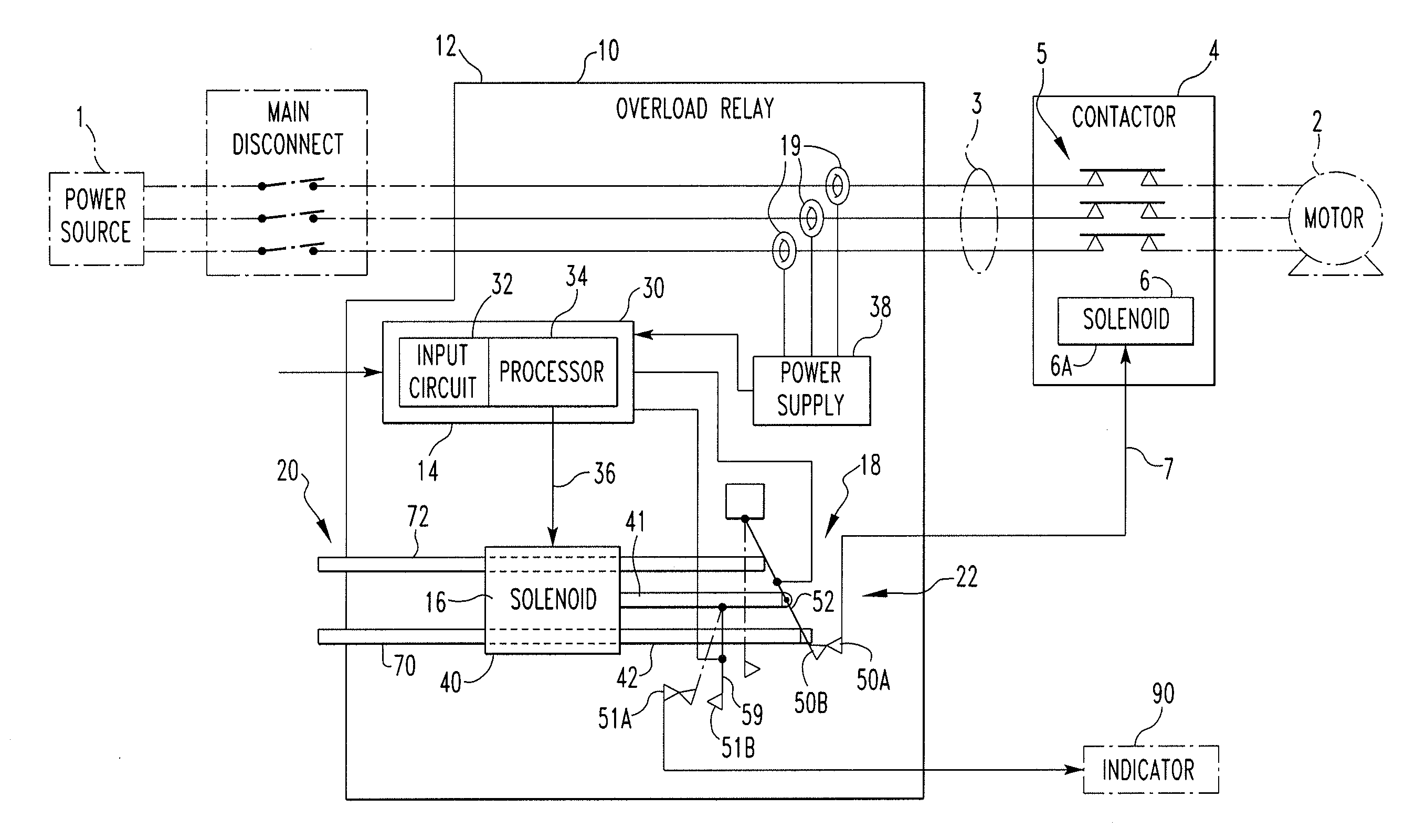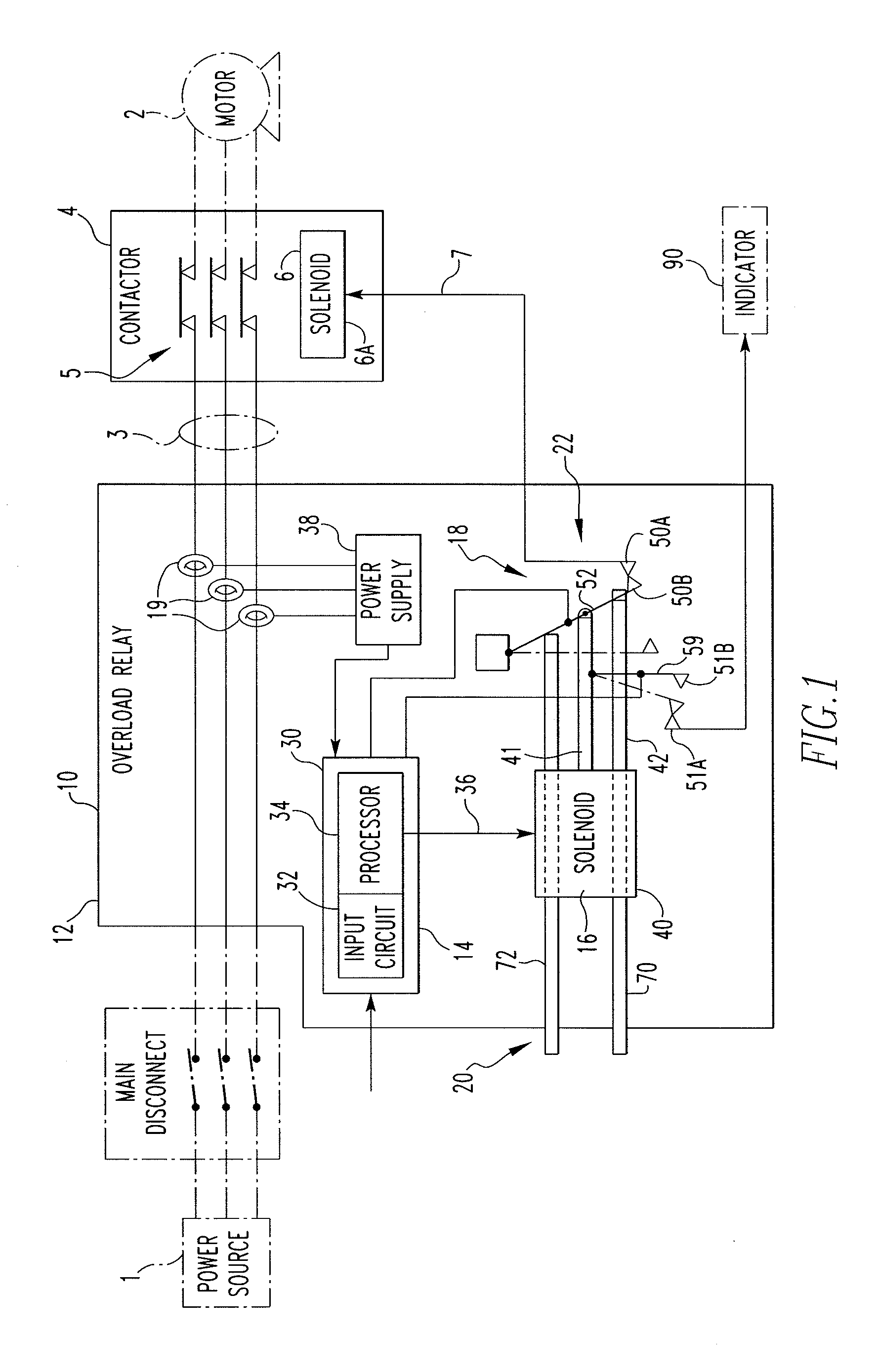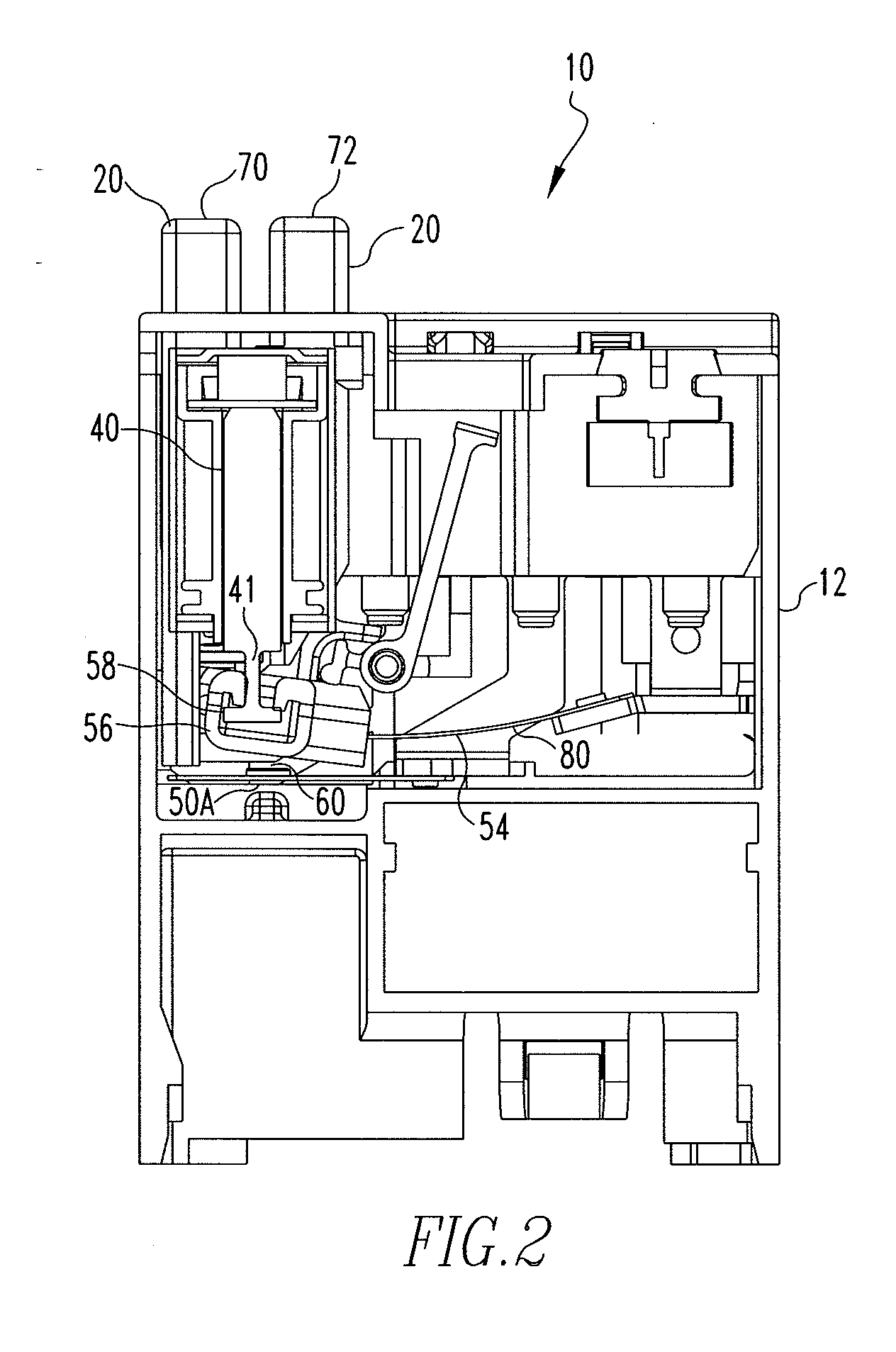Overload relay switch without springs
a relay switch and relay technology, applied in the direction of circuit-breaking switches, contact mechanisms, protective switch details, etc., can solve the problems of disadvantage, improvement, use of solenoid, etc., and achieve the effect of reducing complexity, less complex, and less expensiv
- Summary
- Abstract
- Description
- Claims
- Application Information
AI Technical Summary
Benefits of technology
Problems solved by technology
Method used
Image
Examples
Embodiment Construction
[0022]As used herein, a “generally straight” body means an element wherein the body has a substantially constant cross-sectional shape and area extending over substantially all of the longitudinal axis of the body. That is, the body does not have a plurality of lateral extensions or cut-outs forming multiple ledges. A “generally straight” body may have a single lateral extension, offset, or flange, but not more than one.
[0023]As used herein, “coupled” means a link between two or more elements, whether direct or indirect, so long as a link occurs.
[0024]As used herein, “directly coupled” means that two elements are directly in contact with each other.
[0025]As used herein, “fixedly coupled” or “fixed” means that two components are coupled so as to move as one while maintaining a constant orientation relative to each other. The fixed components may, or may not, be directly coupled.
[0026]As used herein, “selectively coupled” means components are temporarily coupled following a selected a...
PUM
 Login to View More
Login to View More Abstract
Description
Claims
Application Information
 Login to View More
Login to View More - R&D
- Intellectual Property
- Life Sciences
- Materials
- Tech Scout
- Unparalleled Data Quality
- Higher Quality Content
- 60% Fewer Hallucinations
Browse by: Latest US Patents, China's latest patents, Technical Efficacy Thesaurus, Application Domain, Technology Topic, Popular Technical Reports.
© 2025 PatSnap. All rights reserved.Legal|Privacy policy|Modern Slavery Act Transparency Statement|Sitemap|About US| Contact US: help@patsnap.com



